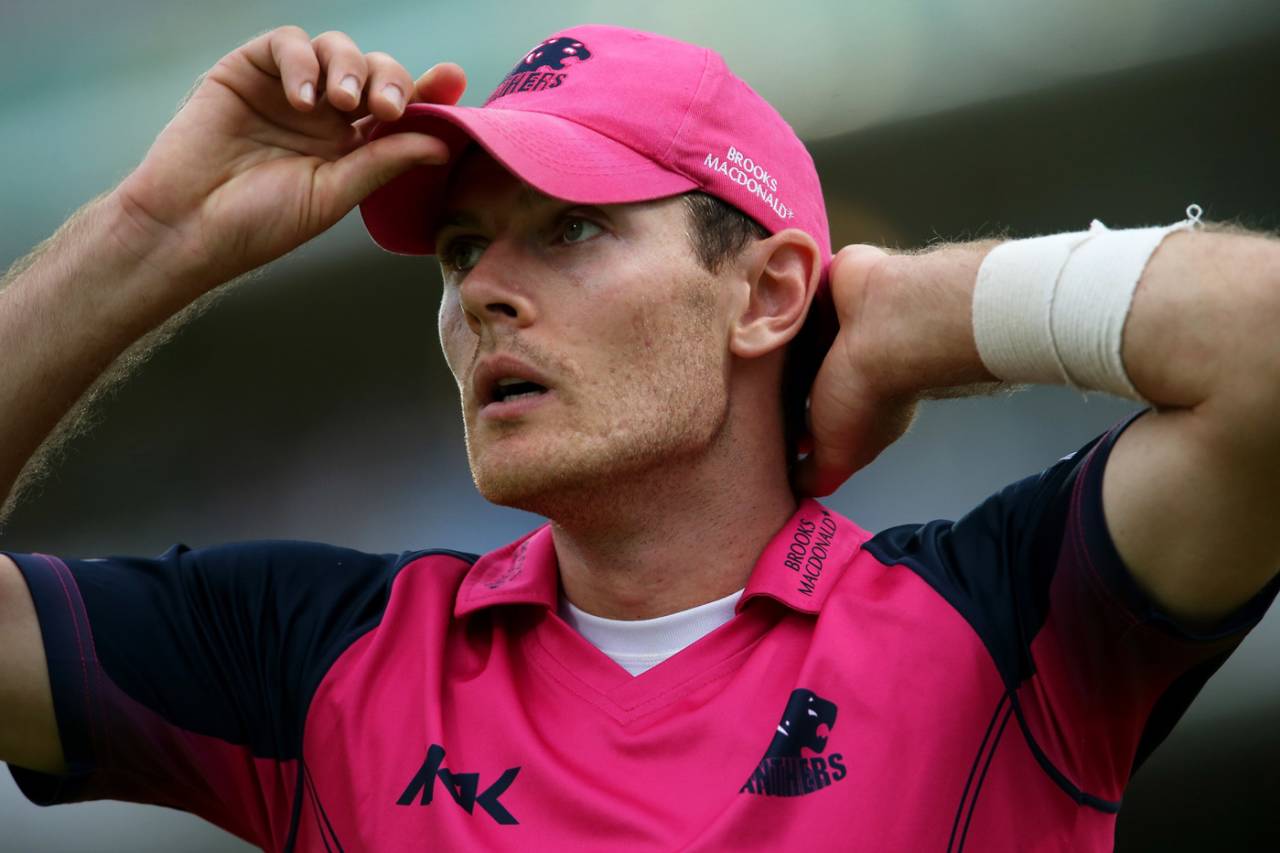How a cricket transfer works
The moves, up, down and sideways, in county cricket explained

James Harris got to pick and choose from 11 counties when he made his way up from Division Two to Division One • Getty Images

For the planet's second most played sport, top-level cricket is a small world, and there are few secrets. This is especially true in the county game, where so much cricket is played and, really, everyone knows everyone. While top football clubs post as many as 20 scouts in all corners of the globe, outside of the IPL, scouts don't exist in cricket.
Timeline: How the game changed
Players moving between counties has not always happened; when qualification regulations were drawn up - in 1873 - the rules stated that a player had to have been born in the shire they represent, or to have lived there for two years. Yorkshire only relaxed their own house rules to include those educated in the county in 1992, which meant Manchester-born Michael Vaughan could play for the Yorkies.
Various cricketers found moving county - a rare occurrence in itself - a tricky exercise, and one that involved plenty of sitting around. In 1961, when Tom Graveney wanted to move from Gloucestershire to Worcestershire having been dumped as captain, he had to sit out a whole season playing League and second XI cricket in order to qualify. As recently as 1972, Bob Willis was banned until July in order to qualify to Warwickshire, where he moved from title-winning Surrey after refusing the terms they had offered. He was worth the wait for Warwickshire, however, taking 25 wickets in nine games as they won the Championship.
The formation of the PCA in 1967 eased movement slightly. Tom Cartwright became the first cricketer to move without the blessing of his old county in 1969-70 when he left Warwickshire for Somerset to take up a role at Millfield School. The PCA represented Cartwright at an appeal to the MCC's all-powerful registration committee and won.
There have been various other staging posts since; Britain entering the common market in 1973 increased freedom of employee movement, which was also a consequence of the Bosman and Kolpak rulings of 1995 and 2003. These rulings also widened the player pool, opening the county game up to far more non-England qualified players, but also made the process far more legally fraught. In the meantime, salaries and sponsorship had been increased by World Series Cricket and the rebel tours of the 1980s. Player power was on the up.
In more recent times, John Crawley blazed a trail in leaving Lancashire for Hampshire in 2001-02. Crawley fell out with Lancashire's committee and, having hired one Cherie Booth QC to represent him, after a hearing at Lord's secured a release from his contract, although had to pay £35,000 for the pleasure (Hampshire paid, naturally), as he had three years to run. Crawley scored 272 on debut and the rest is history.
But an important precedent had been set and attitudes to player movement had changed: players knew they could leave contracts early for a fee and, equally, clubs knew they could move to sign players they fancied. In the following few years, Kabir Ali demanded release from a Worcestershire contract when he believed they had overworked them and caused injury, and Surrey poached Rory Hamilton-Brown from Sussex. Transfers were here to stay.
It is in the hiring of overseas players and Kolpak or British-passport players that agents truly come into their own. The rise of T20 has seen the overseas market change: "When I started out 10-15 years ago," says Darren Long of Beswick Sports, who moved Mark Footitt from Derbyshire to Surrey, "there were 36 overseas slots in county cricket and they were the most sought-after in the game." Now, with national teams more powerful and T20 commitments all around the world, players squeeze in stints in England and it's increasingly a balancing act. "It's all on TV now," says Beswick, "There are few secrets in the game, so there are very rarely massive surprise packages appearing and everyone knows how it works."
Over the last couple of seasons, county cricket has seen a few highly successful loan moves; Liam Dawson's switch to Essex sparked a run of form that earned him a national call, while Craig Meschede made his move to Glamorgan permanent. The PCA are keen on loans - especially from Division One to Two, as they safeguard against talented players carrying drinks. Often, as in the case of Middlesex's Harry Podmore's loan to Glamorgan, the parent club will tie an exciting prospect to a new contract before loaning them out, to allay fears that they will build relationships at the new county and move permanently. The more talent migrates to Division One, the more we will see loans back to Division Two: both Nottinghamshire and Warwickshire were touting around batsmen with more than five first-class centuries before this season.

Perhaps, one day, the system will be truly formalised, as in football. But for now, it is more, more, more. The vulnerable targets - Ben Duckett, Craig Miles, Olly Stone, Daniel Bell-Drummond - at smaller clubs will be poached, as the yawning divide between the divisions widens. Their current clubs will claim fees and, if and when they play for England, more money still. There will be more stockpiling of talent by wealthier clubs. More loans. More transfer fees. More relegation release clauses in contracts. More Division Two clauses in contracts. More tapping up. More money. More transfers.
Will Macpherson writes on cricket for the Guardian, ESPNcricinfo and All Out Cricket. @willis_macp